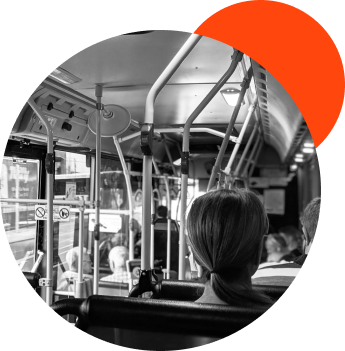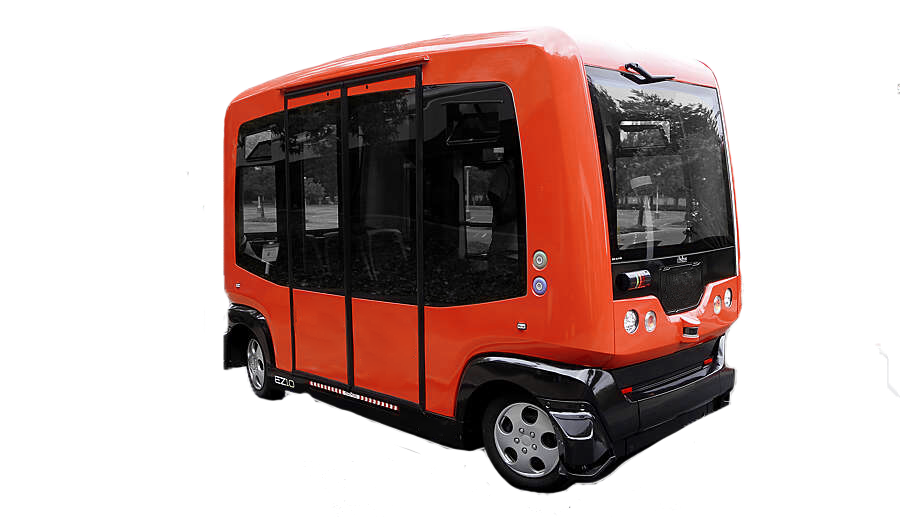
99P Labs came to us with the question, “How will passenger behaviors change when an attendant on a public people mover is available via telepresence or a synthetic representation?”
To get to the root of the problem though, we needed to build an understanding of the current public transportation experience. The team set out to answer a new question: when and why do passengers currently seek assistance on public transportation?

To understand current mental models of people who take public transportation the team completed contextual inquiries with passengers on city buses, facilitated a five-day diary study with people who regularly take public transit, and led semi-structured interviews of participants with a variety of backgrounds and needs.
In synthesizing the data from these foundational methods, we established behavioral archetypes that represented common behaviors and models observed during research activities.
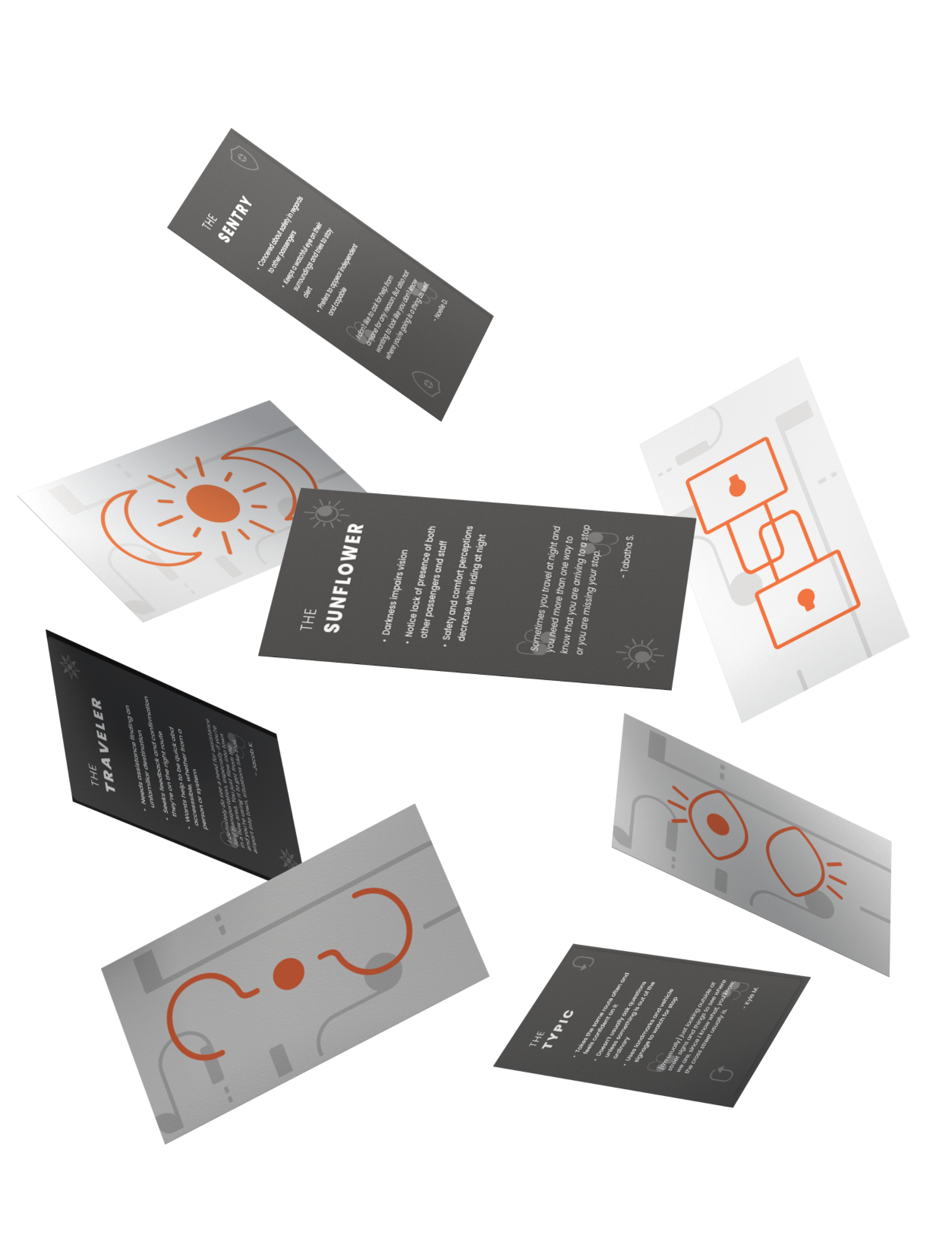
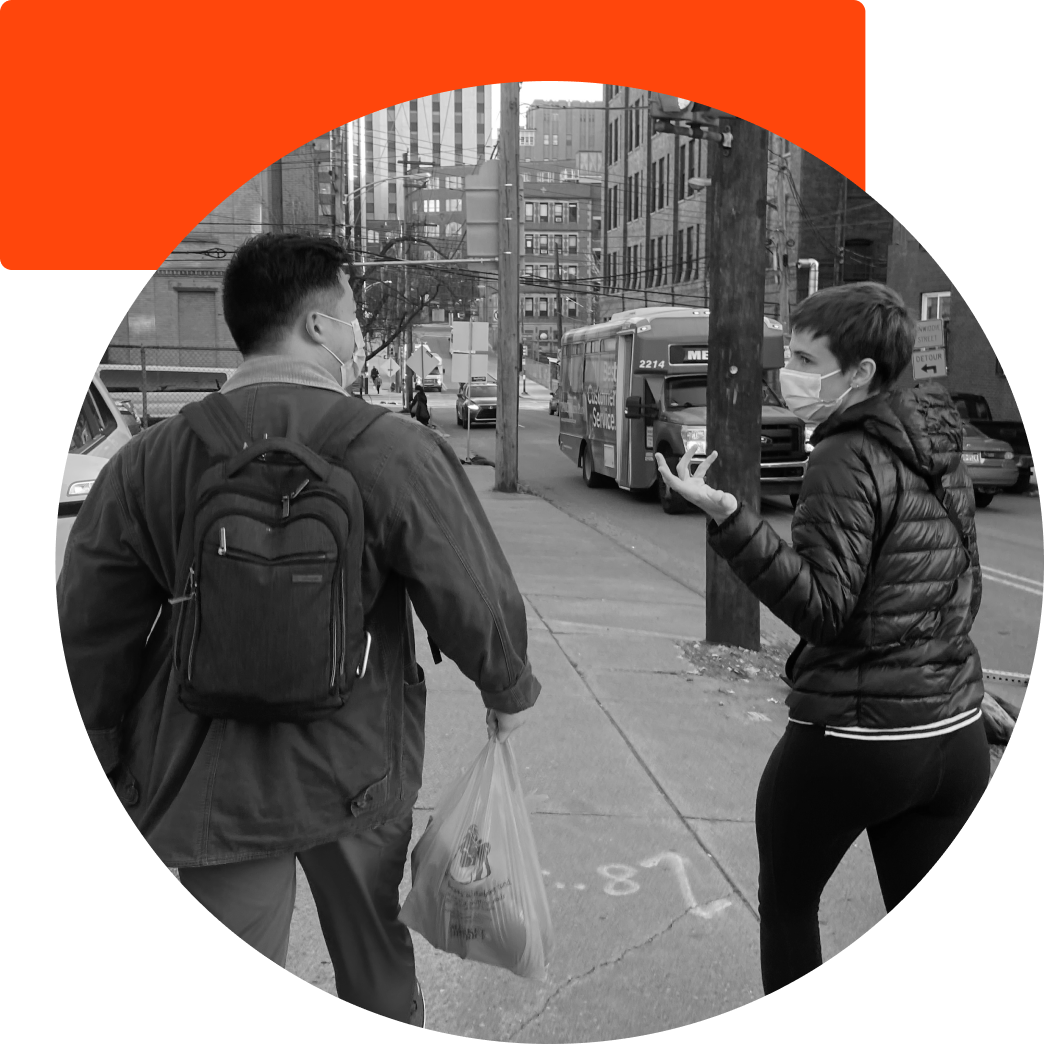
5 Participants | Pittsburgh, PA
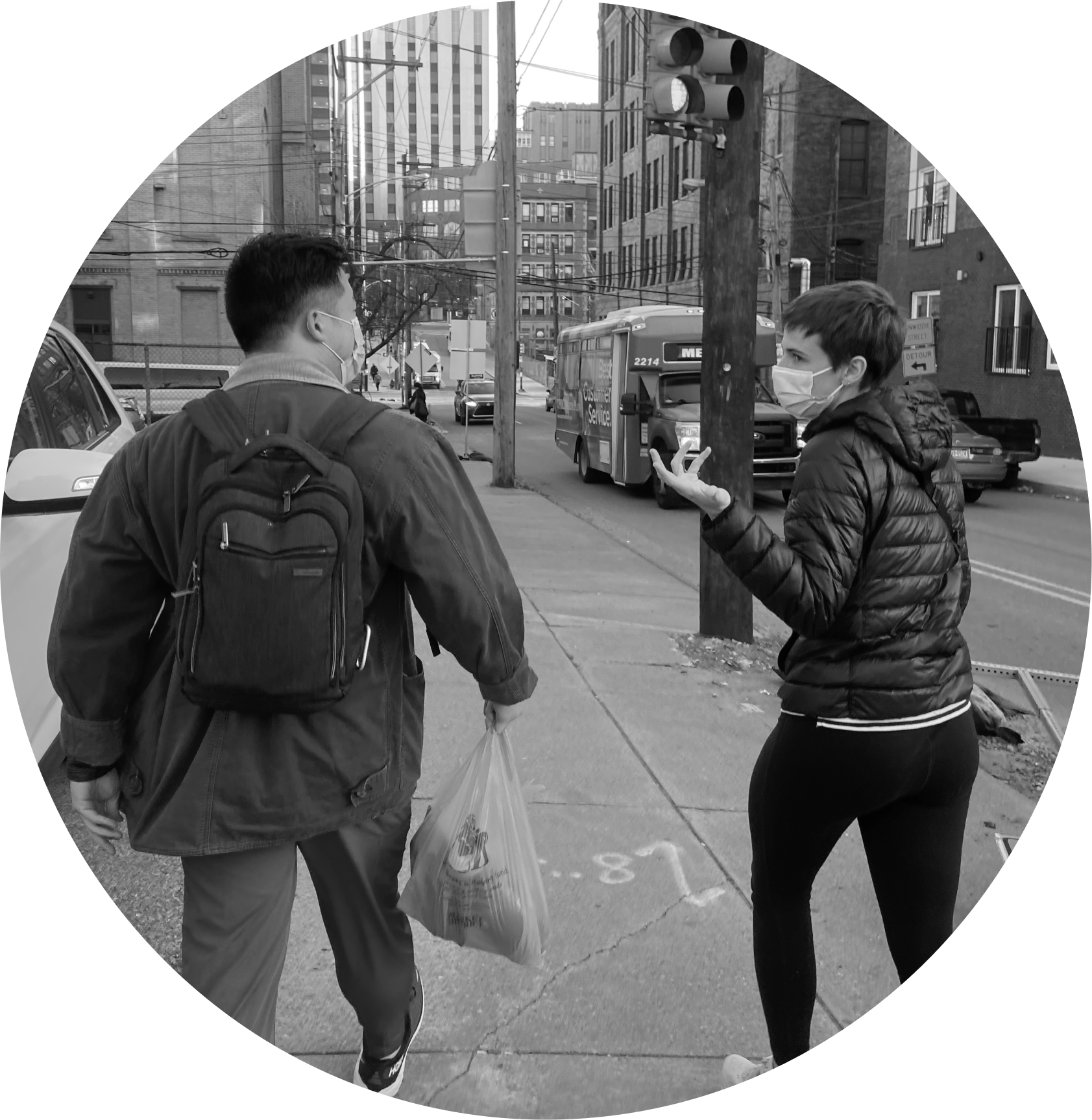
The Goal
Understand the holistic passenger journey from Point A to Point B, observe behaviors and interactions in both routine and atypical moments, understand the why behind how passengers accomplish their transit goals in the context where they occur.
The Who
Pittsburgh residents ranging from a hospital employee commuting to their nightshift, to a couple taking the bus to an evening wedding, to a student running errands mid-week.
The How
The team rode public transit with 5 participants as they traveled to routine destinations throughout the week.
11 Participants | U.S.-Wide

The Goal
Learn about specific user groups' attitudes around transit, uncover user needs, identify scenarios in which users interact with some form of attendant while in transit.
The Who
11 participants across three demographic groups: students in their early twenties, commuters in their 30s or 40s, and seniors over 65.
The How
The team conducted semi-structured interviews and asked participants to describe their experiences with public transportation.
Example Questions
Through secondary research encompassing 25 academic papers and 13 expert interviews, the team built a collective foundation of how humans' relationship with technology and AI has evolved in recent years, and the principles that lead to positive human-AI and robotic interaction.
The key findings from this process highlighted the need for clear expectation setting and personalization in AI systems.
Human-like qualities in AI can lead to higher expectations and trust is often broken when a system doesn't live up to them.

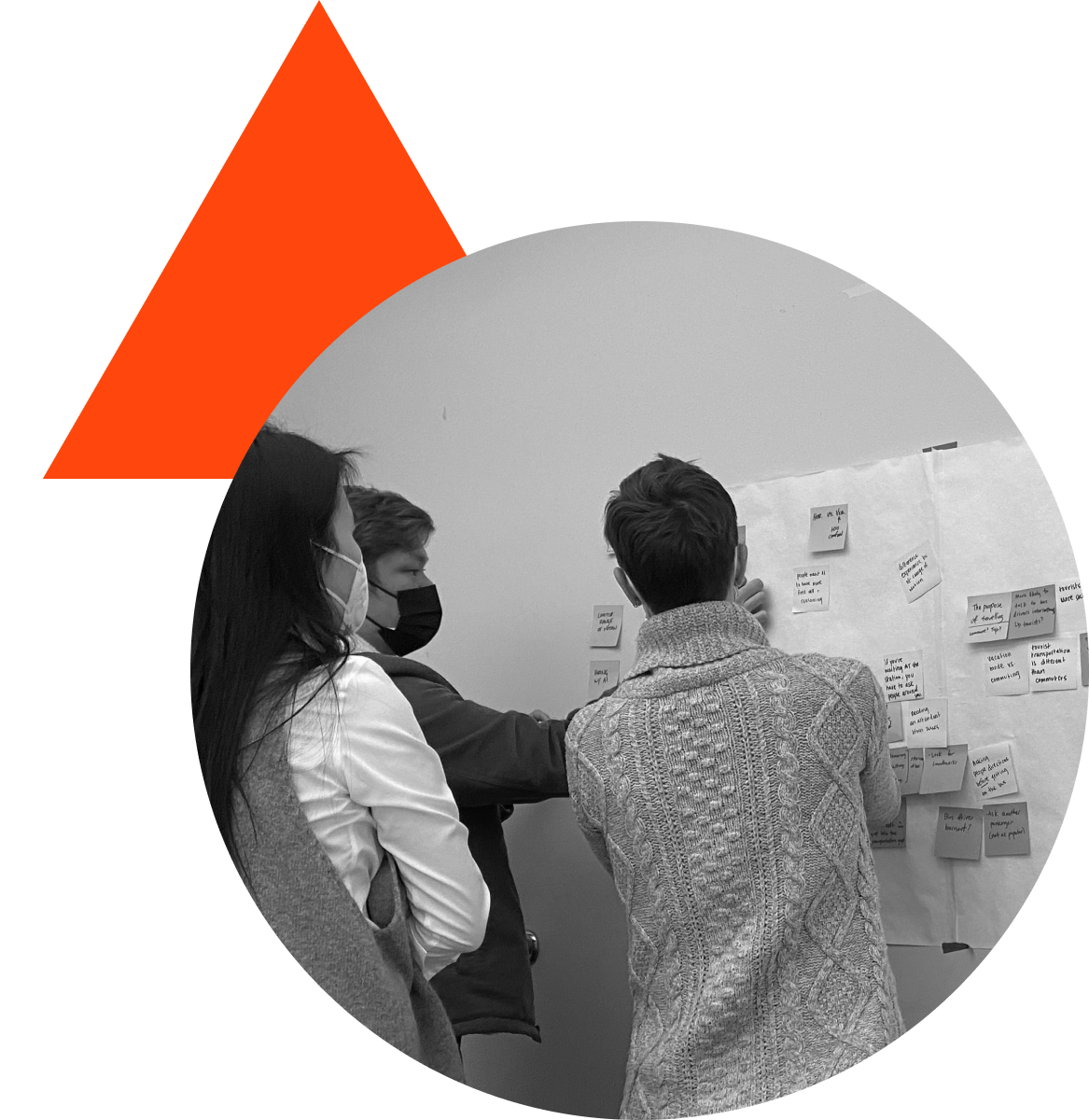
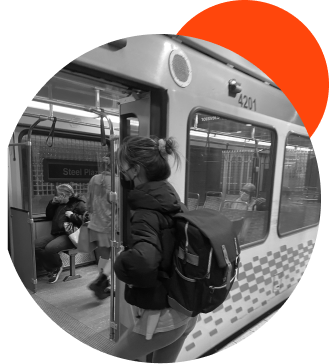
14 Participants | U.S.-wide

The Goal
Identify routine versus unexpected moments and how those impact passenger needs, expectations, and behaviors; mitigate actor-observer bias of team moderated methods.
The Who
14 participants across the U.S. from a variety of backgrounds across geographic location, profession, race and ethnic background, income level, age, and transportation method.
The How
The team used the dscout platform to run a diary study in which participants told us about their experiences in transit across 5 days.
Building and testing prototypes at increasing levels of fidelity throughout the entire design process informed today's final version of the product, Orbit.
Design explorations started with the conceptual: early concept tests, design thinking activities, and insight-based storyboards. By the final stages of the project, the team was conducting research in moving vehicles with multiple passengers riding along and utilizing Orbit to meet their needs.
Feedback and reactions from users across demographic and geographic user groups helped clarify our vision of the ideal form of a system, along with users’ goals and expectations in transit scenarios - in short to be comfortable, safe, and confident that they'll arrive at their destination.

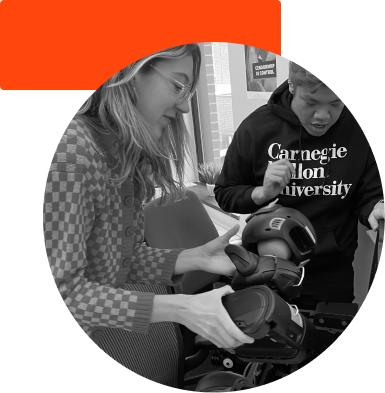
How do you conduct research on a product that might not exist until years in the future?
As a team, we created multiple storyboards to help participants envision early prototypes. The 50+ participants who interacted with them revealed many patterns and fears.
Some emerging themes included doubt of technology's reliability, fear of taking transit at night or in the dark, and concerns about privacy with emerging tech.

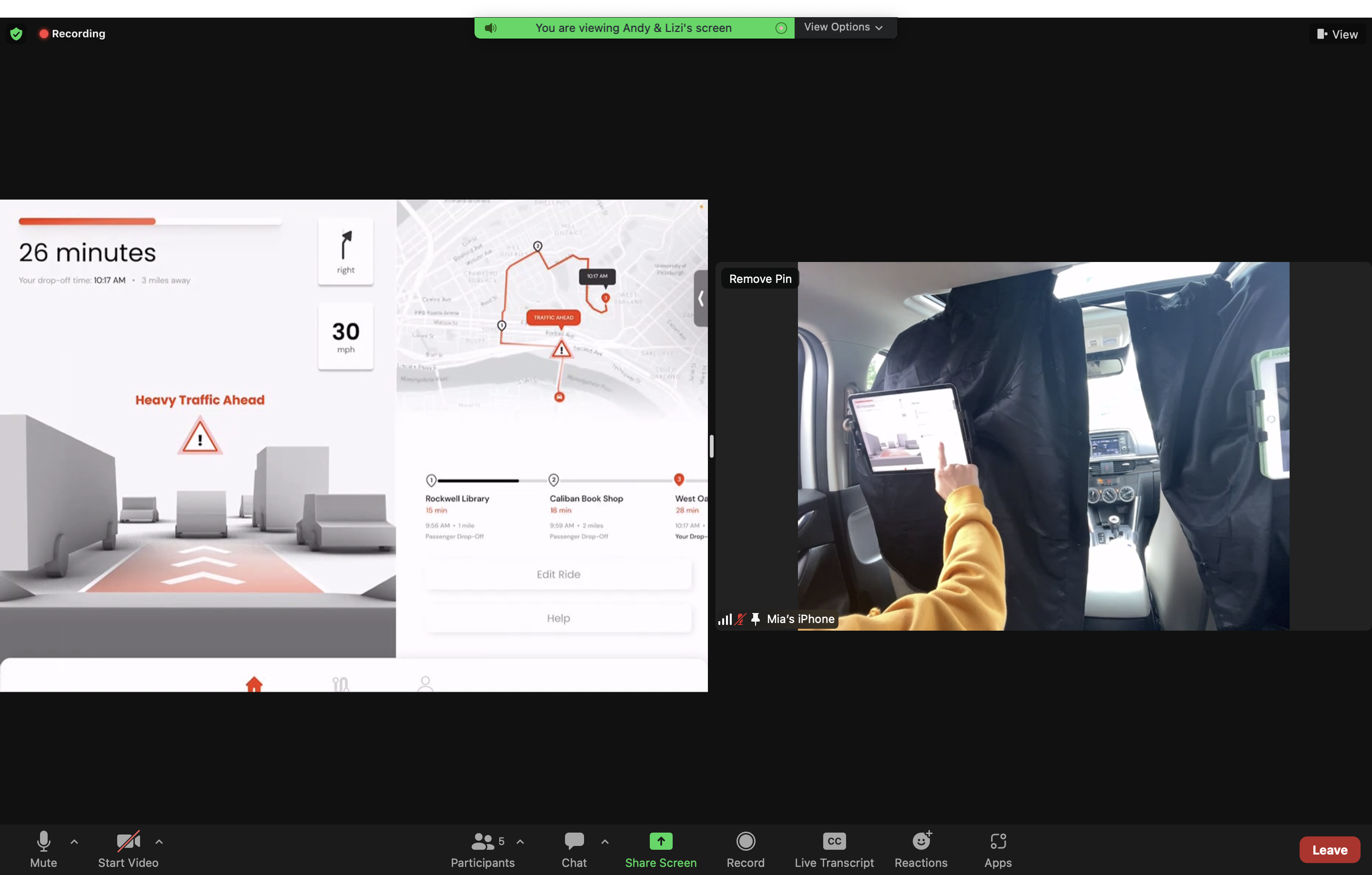
As Orbit began to take shape, it was important to continuously conduct user tests and iterate rapidly to improve the system. Over three months of ideation and prototyping, the team conducted a total of 26 prototype tests.
This included three in-context scenarios and one remote mobile usability test. Participants experienced:
